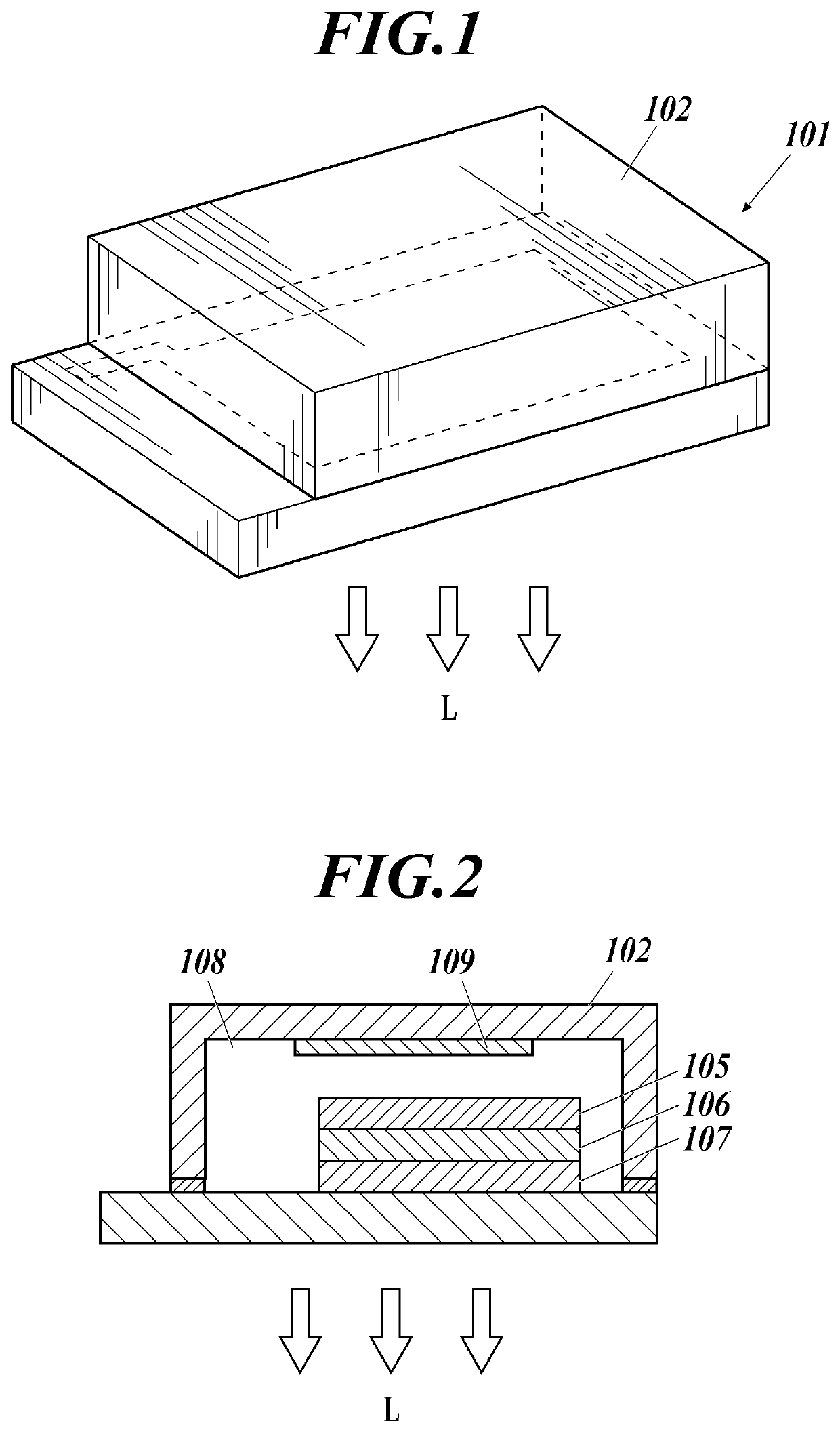Functional film, method for forming same, and organic electroluminescent element
a technology of functional film and organic electroluminescence, which is applied in the field of functional film, a method for forming the same, and an organic electroluminescent element, can solve the problems of insufficient effect, suitable solution for vapor deposition, and lowering carrier transportability, and achieves high luminous efficiency, and high stability. , the effect of good vapor deposition reproducibility
- Summary
- Abstract
- Description
- Claims
- Application Information
AI Technical Summary
Benefits of technology
Problems solved by technology
Method used
Image
Examples
example 1
[0266]For the following mCP (Sample A) and the following exemplified compound 10 (Sample B), respectively, the density value of the functional film (initial film density) was calculated at 300 K by the molecular dynamics calculation of NPT ensemble, and the film density value of the functional film (film density after storage) was calculated by carrying out the molecular dynamics calculation at 370 K, and they are shown in Table I below.
[0267]In addition, the ratio of change in film density was determined as shown below, and is shown in Table I below.
Ratio of change in film density (%)={|initial film density−film density after storage| / initial film density}×100
(1) Measurement Method of Film Density
[0268]The film density specified in the present invention is calculated and obtained by the following method.
[0269]
[0270]Materials Science Suite (manufactured by Schrodinger K.K.) was used.
[0271](a) Create a molecular structure and optimize the structure.
(b) Using the structure optimized i...
example 2
[0278]An organic EL element was fabricated by using the above synthesized exemplified compound.
[0279]It is noted that the compounds used for producing the organic EL element are as follows.
[0280]
[0281]Patterning was carried out on a substrate (NA45 manufactured by AvanStrate Inc.) in which ITO (indium tin oxide) was formed with a film thickness of 100 nm on a glass substrate having a thickness of 100 mm×100 mm×1.1 mm as an anode. Then, the transparent support substrate arranged with the ITO transparent electrode was ultrasonically cleaned with isopropyl alcohol, dried with a dry nitrogen gas, and washed with UV ozone for 5 minutes.
[0282]Subsequently, this transparent support substrate was coated with a solution in which poly(3,4-ethylenedioxythiophene)-polystyrene sulfonate (PEDOT / PSS, Baytron P Al 4083, manufactured by Bayer AG) was diluted to 70% with pure water, by a spin coating method under the condition of 3,000 rpm and 30 seconds to form a thin film, and it was dried at 200° ...
example 3
[0312]Patterning was carried out on a substrate (NA-45 manufactured by AvanStrate Inc.) in which ITO (indium tin oxide) was formed as an anode on a glass substrate of 100 mm×100 mm×1.1 mm to a thickness of 100 nm. Then, the transparent support substrate arranged with the ITO transparent electrode was ultrasonically cleaned with isopropyl alcohol, dried with a dry nitrogen gas, and washed with UV ozone for 5 minutes.
[0313]This transparent support substrate was fixed to the substrate holder of a commercially available vacuum vapor deposition apparatus, 200 mg of NPD was charged in a molybdenum resistance heating boat as a hole transport material, and 200 mg of F-1 was charged in other molybdenum resistance heating boat as a dopant, 200 mg of comparative compound 2 was charged in other molybdenum resistance heating boat as host compound 1, 200 mg of CBP was charged in other molybdenum resistance heating boat as host compound 2, 200 mg of BCP was charged in other molybdenum resistance h...
PUM
| Property | Measurement | Unit |
|---|---|---|
| density | aaaaa | aaaaa |
| density | aaaaa | aaaaa |
| chirality | aaaaa | aaaaa |
Abstract
Description
Claims
Application Information
 Login to View More
Login to View More - R&D
- Intellectual Property
- Life Sciences
- Materials
- Tech Scout
- Unparalleled Data Quality
- Higher Quality Content
- 60% Fewer Hallucinations
Browse by: Latest US Patents, China's latest patents, Technical Efficacy Thesaurus, Application Domain, Technology Topic, Popular Technical Reports.
© 2025 PatSnap. All rights reserved.Legal|Privacy policy|Modern Slavery Act Transparency Statement|Sitemap|About US| Contact US: help@patsnap.com



